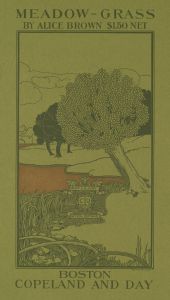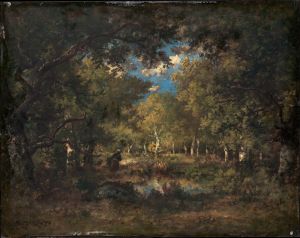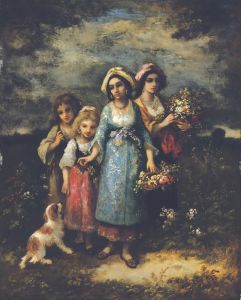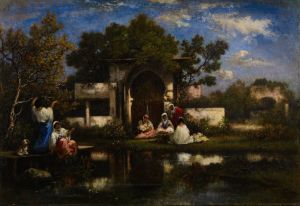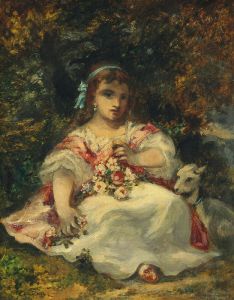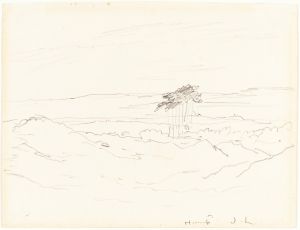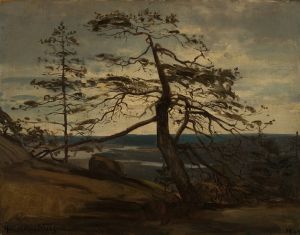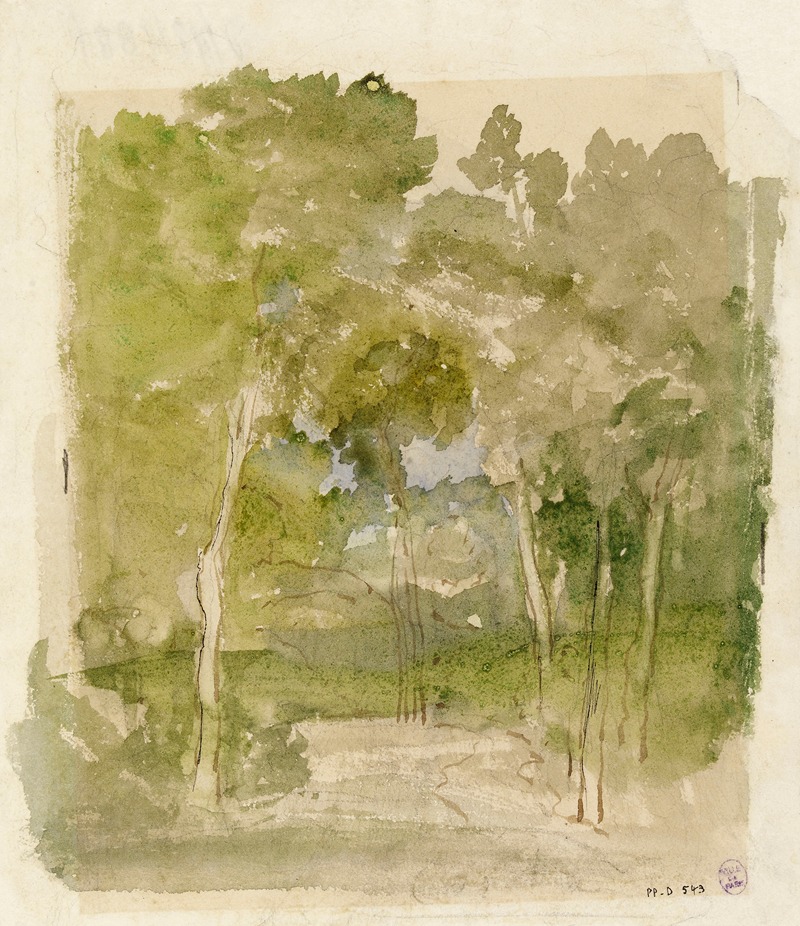
Sous bois
A hand-painted replica of Narcisse-Virgile Diaz de La Peña’s masterpiece Sous bois, meticulously crafted by professional artists to capture the true essence of the original. Each piece is created with museum-quality canvas and rare mineral pigments, carefully painted by experienced artists with delicate brushstrokes and rich, layered colors to perfectly recreate the texture of the original artwork. Unlike machine-printed reproductions, this hand-painted version brings the painting to life, infused with the artist’s emotions and skill in every stroke. Whether for personal collection or home decoration, it instantly elevates the artistic atmosphere of any space.
Narcisse-Virgile Diaz de la Peña was a prominent 19th-century French painter associated with the Barbizon School, a movement that emphasized naturalism and was a precursor to Impressionism. One of his notable works is "Sous bois," which translates to "Underwood" or "Forest Undergrowth." This painting exemplifies Diaz de la Peña's fascination with the natural world and his skill in capturing the intricate play of light and shadow within forested landscapes.
"Sous bois" is a testament to Diaz de la Peña's mastery of color and texture, which he used to evoke the serene and sometimes mysterious atmosphere of the forest. The painting typically features a dense thicket of trees, with sunlight filtering through the leaves, creating a dappled effect on the forest floor. This interplay of light and shadow is a hallmark of Diaz de la Peña's work and reflects the influence of his contemporaries in the Barbizon School, such as Théodore Rousseau and Jean-François Millet.
Diaz de la Peña was known for his ability to render the lushness of the forest with a rich palette, often using deep greens, browns, and touches of gold to bring his landscapes to life. His brushwork in "Sous bois" is both delicate and expressive, capturing the texture of tree bark, the softness of foliage, and the ephemeral quality of light. This attention to detail and his ability to convey the mood of the forest environment made his works highly sought after during his lifetime.
The Barbizon School, to which Diaz de la Peña belonged, was named after the village of Barbizon near the Forest of Fontainebleau, where many artists gathered to paint en plein air, or outdoors. This approach was revolutionary at the time, as it diverged from the traditional studio painting and allowed artists to capture the changing effects of natural light and atmosphere directly from nature. Diaz de la Peña, along with his peers, played a crucial role in this movement, which laid the groundwork for the later development of Impressionism.
"Sous bois" reflects Diaz de la Peña's deep appreciation for nature and his desire to depict it with authenticity and emotion. His work often conveys a sense of tranquility and introspection, inviting viewers to immerse themselves in the quiet beauty of the forest. While Diaz de la Peña's landscapes are sometimes overshadowed by those of his more famous contemporaries, his contributions to the Barbizon School and his influence on the evolution of landscape painting are undeniable.
Throughout his career, Diaz de la Peña faced personal challenges, including a physical disability that affected his leg, but he persevered and continued to produce a significant body of work. His paintings, including "Sous bois," remain celebrated for their vibrant use of color and their ability to capture the essence of the natural world.
In summary, "Sous bois" by Narcisse-Virgile Diaz de la Peña is a quintessential example of the Barbizon School's approach to landscape painting. It highlights the artist's skill in depicting the subtle interplay of light and shadow within a forest setting, as well as his commitment to portraying nature with both accuracy and emotion. Diaz de la Peña's work continues to be appreciated for its contribution to the development of modern landscape painting.






